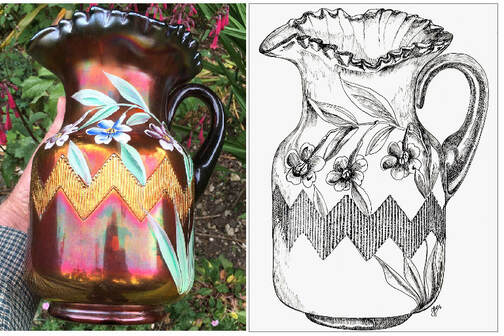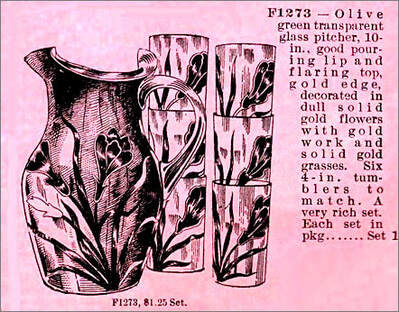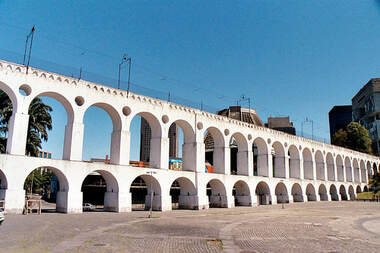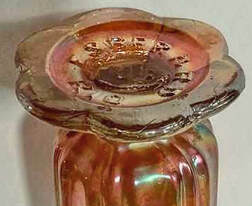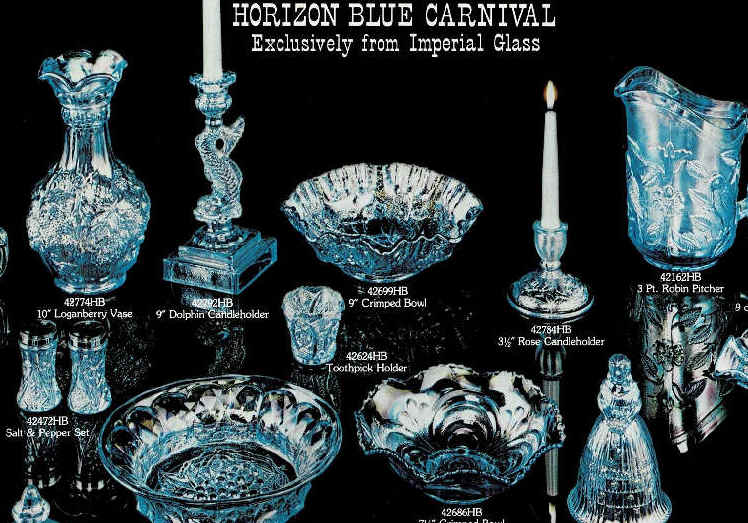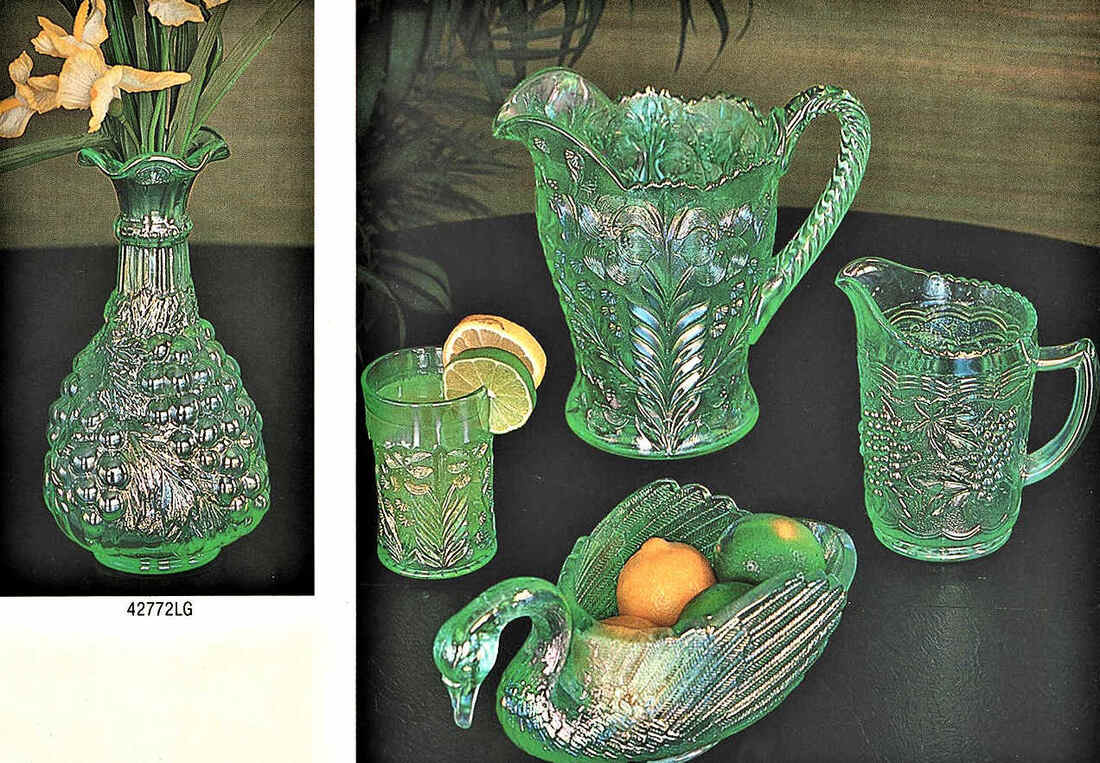NetworK ezine Issue 103. December 2023
Totally Devoted to Carnival Glass
|
Welcome to our December issue of Carnival NetworK – doesn’t time fly? It hardly seems five minutes since we were Issue #102. In this edition we start with a look at Fenton’s enamelled (decorated) water sets, and we put forward a suggestion regarding a likely inspiration behind them.
Decorated Water Sets We have a passion for decorated (enamelled) Carnival – water sets in particular. Fenton shone in this, producing most of the beautiful enamelled water sets of the Classic Carnival makers. The Fenton brothers' roots were in glass decoration. In 1905, Frank and John Fenton, had opened a glass decorating shop which they called the Fenton Art Glass Company. They were soon joined by their brother, Charles. They “built a kiln in a rented, abandoned factory” (source: Heacock) and began purchasing “blanks” from various glass companies, onto which they then hand-painted Frank Fenton’s designs. The “abandoned factory” that they had rented was the old West Virginia Glass Works (known as the National Glass Co Factory No. 19, and also known as Haskins). We frequently hear about the early beginnings of the Fenton brothers, so it’s interesting to see this coloured postcard image of the glassworks (below) where they started up the first Fenton Art Glass Company. This is the “abandoned” Martins Ferry glassworks rented by the Fenton brothers in 1905. It was the West Virginia Glassworks / National Glass Factory No. 19 / Haskins. Courtesy Fenton Family and Fenton Art Glass.
You can read more about the beginnings of Fenton Art Glass Company here: Fenton at Martins Ferry, 1905 |
A display of some of our decorated Carnival water sets (with one or two
non-decorated pieces in there purely for an impartial balance)! |
It would have been a natural progression for Fenton to use their skills and experience in making decorated items when they subsequently moved to Williamstown and began making Carnival Glass. Shown below are some examples of their wonderful enamel-decorated Carnival Glass pieces.
|
Note the shaping of the tightly crimped tops on these two pitchers and the gold edging on the rim of the white one. Now, take a look at the ad on the right which we came across when we recently perused pages from a 1902 Butler Brothers’ wholesale catalogue. Although the Bohemian items are not iridescent, you can clearly see the similarity to the Fenton designs; the top shaping on the Fenton pitchers with their tight crimping and undulating rims, echo the appearance of the Bohemian pitcher shown in the 1902 Butler Brothers extract, and there is even a reference to them having "gold edges". Right: an extract from 1902 Butler Brothers catalogue.
Courtesy Glass Paper Fanatics. |
|
And here is another example of the obvious similarity between the Bohemian water sets being imported into the USA around that time, and the designs of items that were subsequently made by Fenton.
Another extract from 1902 Butler Brothers catalogue.
Courtesy Glass Paper Fanatics. |
On the left is a Fenton Banded Drape water pitcher with Iris decoration and a Crocus with Prism Band decorated tumbler. Both in green Carnival.
|
It is important to state that these two Butler Brothers ads were for decorated items ... but they were not iridised (so, they were not Carnival).
However - this banner (below, right) in the same 1902 catalogue most definitely got our attention with the reference to "Iridescent and Enamel"!
|
Naturally, it got us thinking … might Fenton have seen similar items and been inspired by them to create similar pieces? Of course, decorating glass was not unusual, and many other firms were doing it. But these Bohemian items had an appearance that made us think that the Fenton brothers might have seen them and used some of the design ideas in their own wonderful work ... and perhaps it was the inspiration to apply an iridescence! What do you think?
|
Esberard Discoveries in Brazil
Readers might wonder how this magnificent structure standing proudly against the azure blue skies of Rio de Janeiro, is connected to Carnival Glass. The answer lies in a recent, delightful discovery by Italo Orsolin in Brazil; this little marigold toothpick holder. This toothpick holder in marigold is marked ESBERARD RIO, and it has been named "Lapa".
The pattern on the toothpick is a series of repeated, tall arches, and they reminded Italo of the splendid Arcos de Lapa structure – so he chose to name this first-reported example, “Lapa”. Here is the toothpick in the 1907 Esberard catalogue, shown as item 309, standing 75 mm (3 inches) high. It is referred to in the catalogue, alongside two other toothpicks as “Paliteiros sortidos em cores” meaning “Toothpick holders in assorted colours”. It’s unlikely this item was made as early as 1907 in Carnival; it was possibly a decade or two later. |
Lapa photos and name, courtesy Italo Orsolin and thanks to Claudio Deveikis.
|
Another discovery by Italo was this charming little plate that has been named “Mandala” for its repeating, geometric design.
Fenton’s Revival Red Carnival in 1993.
In 1993, Fenton released a line of red Carnival in their Family Signature Series pieces.
In 1993, Fenton released a line of red Carnival in their Family Signature Series pieces.
|
The full 1993 line is shown in our Fenton Revival Catalogues section (link below), where we feature this, and many other Fenton Revival catalogue pages. In addition to the catalogue page, we include information on the patterns and moulds, as well as their origins. The items presented in the catalogue include this splendid Hobnail vase, and an "Elite" vase, both shown here. The Hobnail vase has a wonderful hand-finished top with a continuous crimp and jack-in-the-pulpit shape. The "Elite" vase is a intriguing piece with quite a history, from its origin in the late 1800s through to its use by Fenton! Different moulds were used for making this vase, which we show on our Fenton Revival Red page. Here is the link: Fenton Revival Red 1993 |
Fenton’s 1993 Hobnail Tulip 8” vase (#3356) in red Revival Carnival.
|
Fenton’s “Elite” vase (#6564) on the right, alongside an
extract from the 1905 Westmoreland catalogue. The pattern was designed by B. Bennett and originally patented in 1896. |
Imperial - Classic to Revival.
|
Imperial Classic Carnival In its Classic Carnival days, Imperial advertised its products extensively in many ways, which we have documented fully elsewhere on our website - in wholesale catalogues such as Butler Brothers, in retail mail order catalogues where it featured as premiums, such as in Lee Manufacturing and Perry G. Mason, and in direct adverts. One of its direct advertising routes was in the Pottery, Glass and Brass Salesman journal, for which Imperial used the services of its New York Representatives, Cox & Lafferty. On our website, we have a series of these full page ads that were published in 1910-1911. Items bought from the ads were shipped to the customers directly from Imperial's Bellaire factory. Here on the right is one of Cox & Lafferty's ads from 8th. December 1910. Above: two of the Classic Carnival pieces in the Cox & Lafferty ad.
An Imperial Grape carafe and a Scroll Embossed comport, both in purple / "Azur". Right: Cox & Lafferty ad 8th. December 1910. The items are an Imperial Grape "blown vase" (now called a carafe), pitcher and tumblers in a "Lemonade Set" (today is called a water set), and a Scroll Embossed footed comport. The items are in "Azur", Imperial's marketing name at that time for their purple Carnival. |
Imperial Revival Carnival
In the early 1960s, Imperial - as well as Fenton and other glassmakers - saw the market for the revival of Carnival Glass production. For their re-issues, Imperial cleverly used the name "Carnival Glass", recognising the widespread popularity of this glass.
In the early 1960s, Imperial - as well as Fenton and other glassmakers - saw the market for the revival of Carnival Glass production. For their re-issues, Imperial cleverly used the name "Carnival Glass", recognising the widespread popularity of this glass.
|
Changes of Ownership. Imperial was very successful in exploiting the market for Revival Carnival Glass, using many of its old moulds from its Classic era, as well as a wide range of beautifully and well designed new moulds, and also moulds that it acquired from other glassmakers that had closed down. Their Revival Carnival pieces were marked "IG", as in the ad, right. By the early 1970s, Imperial was in need of new operating capital. A deal was struck with Lenox Inc. and the business became Lenox Imperial Glass in 1973. The IG mark was changed to LIG. In 1981 the business was sold again - to Arthur Lorch (and the LIG mark became ALIG), but it continued to struggle financially, until ALIG finally closed in 1984. |
Above: extract from an ad in "The Pantograph", December 7th. 1967.
|
|
During the LIG and ALIG periods, some attractive new colours of Revival Carnival were introduced into the line. Thanks to, and courtesy of, the Glass Paper Fanatics, we are able to show you catalogues of two distinctive Revival Carnival Glass colours from Lennox Imperial Glass in 1980 - Horizon Blue and Meadow Green. Also, we can show you the last known catalogue produced for Imperial under Arthur Lorch's ownership, published for the 1982 - 1983 sales period, featuring a colour they called Sunburst Yellow.
Shown in this Issue of NetworK are small extracts of the pieces offered in these colours, and at the end of this section there are links to the full catalogue pages, and the identification of the patterns, elswhere on our website. It is fascinating to see just how many patterns that had originated in Imperial's Classic Carnival days actually survived into this Revival production; Loganberry, Robin, Heavy Grape, Tiger Lily, and ... yes two "old friends" that featured in the 1910 Cox & Lafferty ad where we opened this section ... Imperial Grape and Scroll Embossed. Right: Lennox Imperial Horizon Blue Revival Carnival.
Courtesy Glass Paper Fanatics. |
Here are the links to see the full details of Imperial's Cox & Lafferty ads, and these Revival catalogues:
Classic Imperial Carnival ads: Cox & Lafferty 1910-1911
Lennox Horizon Blue: Horizon Blue Revival Carnival
Lennox Meadow Green: Meadow Green Revival Carnival
Arthur Lorch Sunburst Yellow: Sunburst Yellow Revival Carnival
These pages also have further links to other Imperial ads and Revival Imperial catalogues.
Privacy and the use of your information: we only use your name and email address to send you your Carnival Glass NetworK ezine. We will not share your name or email address with anyone else, or use it for any other purpose. You can change your mind about receiving your NetworK ezine at any time by clicking the unsubscribe link at the foot of every issue, or by emailing us at [email protected]
Join us on Facebook
We invite you and your friends to join us all on NetworK's fast growing and very active Facebook Group (link is below), and if you have missed any of the previous issues of NetworK and NetworK Specials, they are all here: Back Issues.
We invite you and your friends to join us all on NetworK's fast growing and very active Facebook Group (link is below), and if you have missed any of the previous issues of NetworK and NetworK Specials, they are all here: Back Issues.




